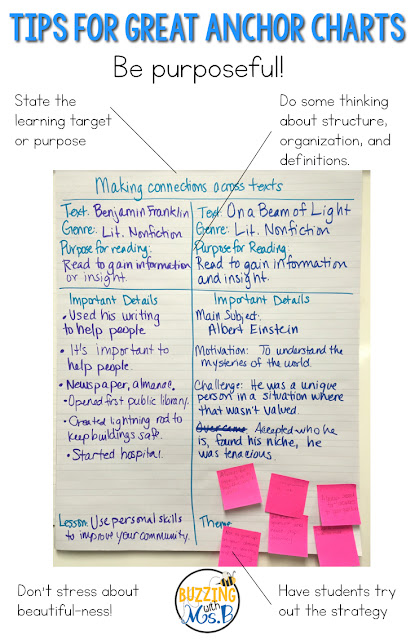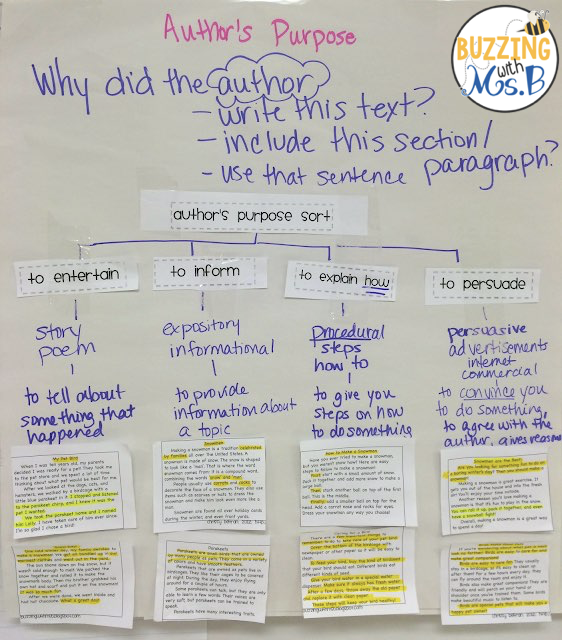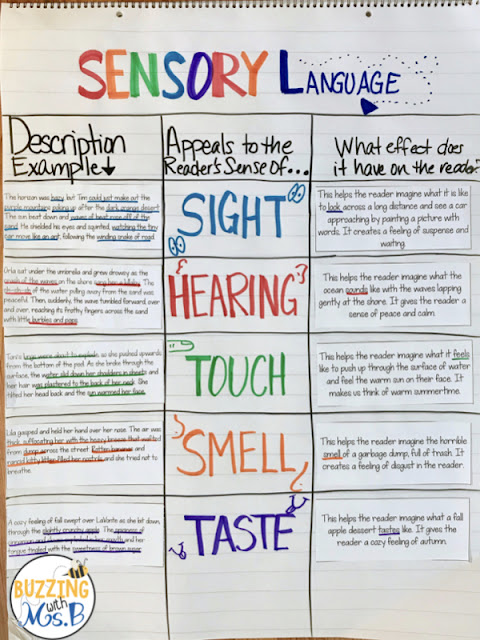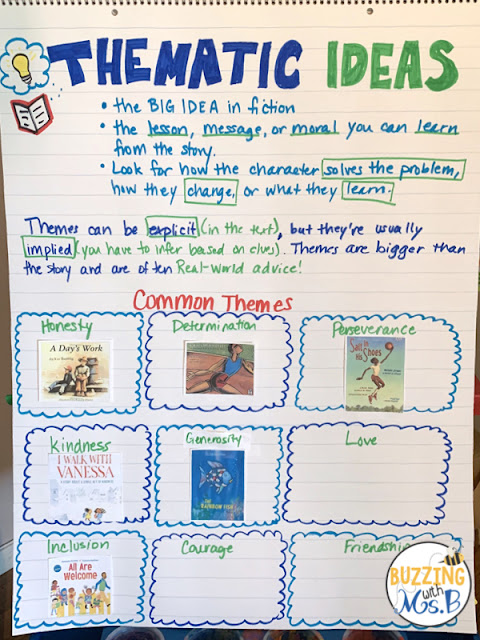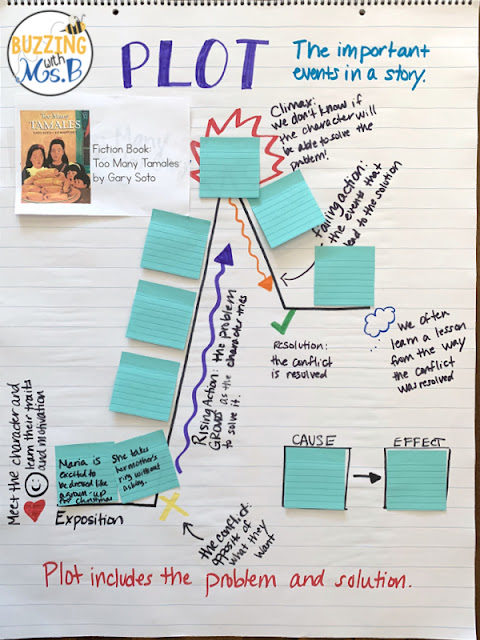Anchor Chart: it’s a phrase used commonly in education.
They adorn walls in classrooms across the country, and, when used correctly, they can be an excellent instructional tool.
- made DURING the lesson.
- records of student and teacher thinking.
- an anchor (ahhhh) for student learning.
- placed on the wall to help students recall the lesson experience and content.
- replaced when they are no longer needed or useful to students.
- interactive. They can be added to over time.
- full of student and teacher handwriting.
- purposeful.
Anchor charts are not…
- printed out from a file or teacher-created and possibly laminated.
- done BEFORE the lesson.
- records of teacher thinking or information only.
- static; remaining the same over time.
- wallpaper in the classroom.
- the same year after year.
- decorations.
Those are posters.
So let’s talk a little bit about how to use anchor charts effectively.
Tip #1: Use them purposefully.
Anchor charts come into play when there’s an important concept and learning experience that you want kids to recall. You may be a planner: you may know in advance that you plan to use an anchor chart to record and think through the lesson with kids. But you might not. You may be suddenly inspired during a lesson, whip out a blank chart paper, and go to town! Either way is ok!
That being said, you probably don’t want an anchor chart for every single lesson. It’s overwhelming and cluttered. You may want to identify the main concepts you want kids to have a reference for and build charts in those situations. As charts become outdated or unnecessary, take them down so you can replace them with current ones.
You can save the old charts, if you think kids will need to refer to them later. You can also just stack new charts on top of the old chart, by stapling only across the top.
Tip #2: Do some thinking first.
Some people have a template for the anchor chart before they begin the lesson. Having a general idea of structure and organization for your chart is a good thing, but you don’t need (or even want) to have every last detail planned out. If you already know what you’re going to write on the chart, you’re less likely to allow for kid input.
It definitely helps to have kid-friendly definitions or language ready so you’re not fumbling for how to word certain things on your chart. Ideally, you’ll probably have this as part of your lesson planning anyway.
Tip #3 Include a learning target.
I try to include a learning target, purpose, or title on the chart. This helps kids recall what the point of the lesson was. I also will try to include the concept information (main bullet points of important ideas) needed for kids to recall the lesson later.
Tip #4 Try it out!
Then, we try the strategy out in the way that I want kids to try it later. We might use sentence starters, post-it responses, task cards, or a graphic organizer to help kids try out the strategy, and record it on the chart.
Tip #5 Don’t stress about beautiful-ness!

I keep it all-natural 🙂 I record as we go through the lesson. I try to use color well, but honestly, I usually forget. My charts are not beautiful or gorgeous. You can definitely see a difference between the charts I make as a sample and the charts I make in the moment in the classroom. And that’s ok! If they’re legible and they’re purposeful, and kids can access the information on them, they’re fine!
Some teachers take home charts after the fact to rewrite them. The issue with this is that, at that point, it no longer looks like the chart you made with your students during the lesson. It’s invariably organized differently or has information in different places. Will kids still refer back to it, or will it become wallpaper?
The main purpose of an anchor chart is to be a useful record for student reference. It anchors student learning to the chart. Posters, while they may be attractive and perfectly designed, are not anchor charts. They serve a completely different purpose.
Do you have any great tips for using anchor charts?
